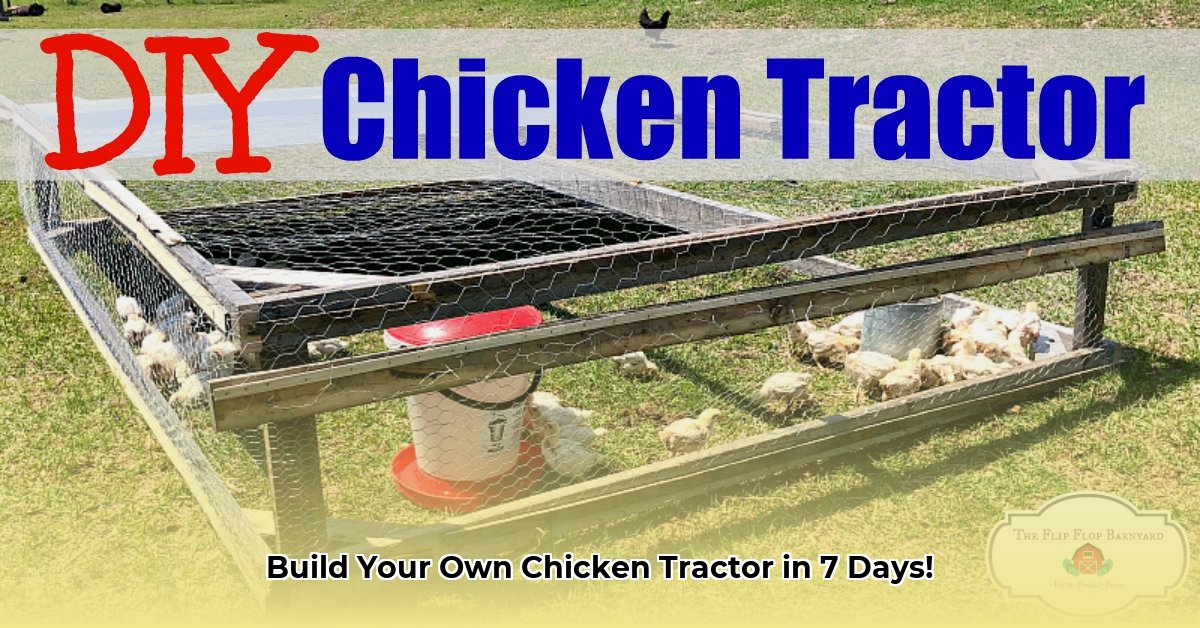
Chicken Tractor Dimensions: Building Your Backyard Hen Haven
Ready to build a cozy, mobile home for your feathered friends? Getting the right chicken tractor dimensions is crucial for happy, healthy hens. This guide provides a step-by-step plan, perfect for beginners.
Want to ensure your chickens thrive? Proper sizing is key. A cramped coop leads to stress, pecking order battles, and health issues—definitely not what we want!
For even more detailed plans, check out this helpful pallet chicken tractor guide.
Sizing Up Your Flock: How Much Space Do Your Chickens Need?
Before you start building, consider your flock. How many chickens will you house? Are they small bantams or larger breeds like Rhode Island Reds? Breed and flock size directly impact the needed space.
A Rhode Island Red requires more room than a Bantam. More chickens mean more space! Imagine your chickens needing enough space to roam, dust bathe, and roost comfortably.
| Number of Chickens | Minimum Coop Size (sq ft) | Minimum Run Size (sq ft) | Total Area (sq ft) |
|---|---|---|---|
| 2-4 | 4 | 16 | 20 |
| 5-8 | 6 | 24 | 30 |
| 9-12 | 8 | 32 | 40 |
Important Note: These are minimums; more space is always better. Local regulations may also apply; check your local ordinances.
Designing Your Dream Chicken Tractor: Dimensions and Details
Let's design your chicken tractor. We'll focus on a simple, rectangular design – easy to build and adapt.
1. The Coop: Roosting and Egg-Laying Area
This is where your chickens sleep and lay eggs. Aim for at least 3.5 feet in height for comfortable headroom for most breeds. Length and width depend on your flock size (see table above). Ensure enough space for roosting and nesting without overcrowding. Isn't it important that your chickens have a comfortable place to lay their eggs?
2. The Run: Foraging Freedom
This is where your chickens spend most of their time foraging. The run should be significantly larger than the coop – at least four times the coop's area (see table above). Consider how much space your chickens need to forage and how often you'll clean. Don't your chickens deserve a spacious area to roam and forage?
3. Height: Predator Protection
The total height should deter predators. A minimum of 4 feet is recommended, but consider your area's predators. Taller is better for extra security. Consulting with local wildlife experts is advisable to determine appropriate height based on local predators. Would you want your chickens vulnerable to predators?
4. Materials: Selecting Durable and Sustainable Options
Choose durable, weather-resistant materials. Recycled lumber is an eco-friendly option. The necessary materials will depend on your chicken tractor dimensions. Buy extra; it’s better to have leftovers than run short. What are some durable and sustainable materials suitable for a chicken tractor?
Building Your Chicken Tractor: A 7-Day Step-by-Step Guide
This project is rewarding! Safety first – always wear safety glasses and gloves.
Day 1-2: Building the Frame
Construct a sturdy rectangular frame using strong lumber for the base and sides. Ensure the coop area is securely enclosed and robust enough to support your flock and any additional features.
Day 3-4: Creating the Coop
Build the coop inside the frame. Install roosting bars and nesting boxes.
Day 5: Assembling the Run
Attach the run, using welded wire mesh or strong chicken wire. Use hardware cloth on the bottom to prevent burrowing predators.
Day 6: Adding Mobility
Attach wheels or runners for easy movement.
Day 7: Securing and Final Touches
Double-check all doors and latches. Conduct a final inspection.
Important: Check local building codes before starting.
By carefully planning your chicken tractor dimensions and following these steps, you’ll provide a safe and comfortable home for your hens. Happy building!